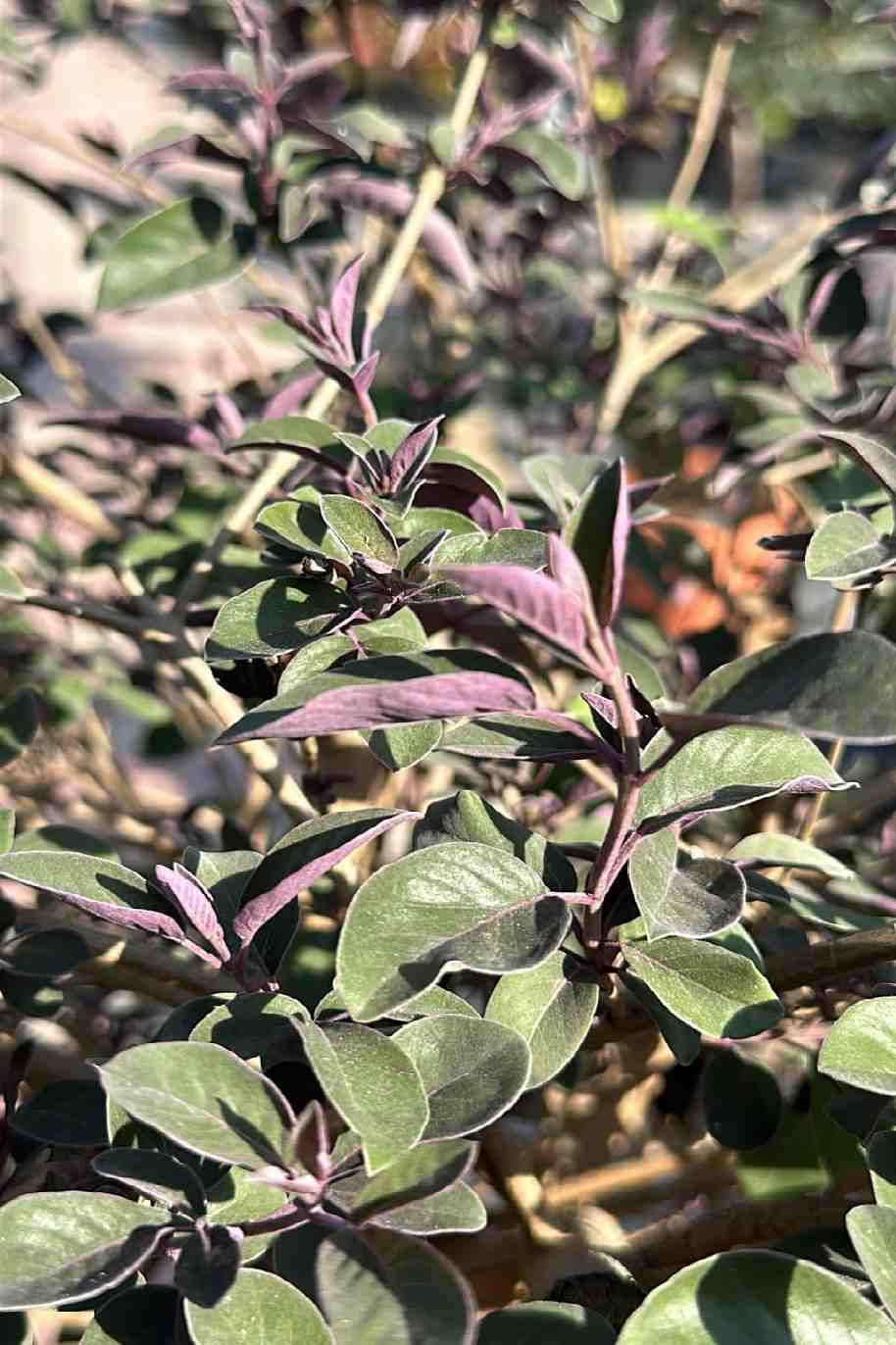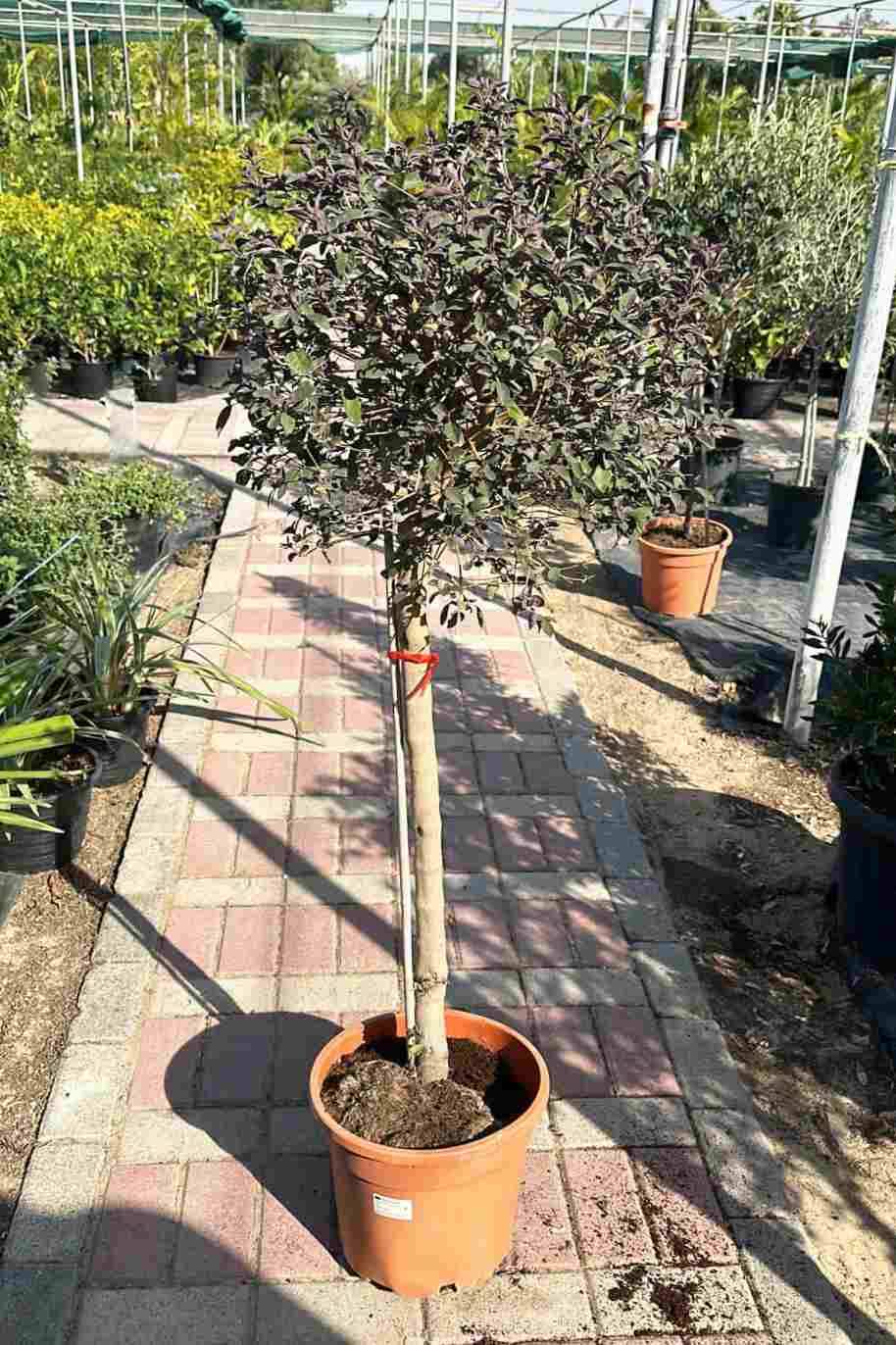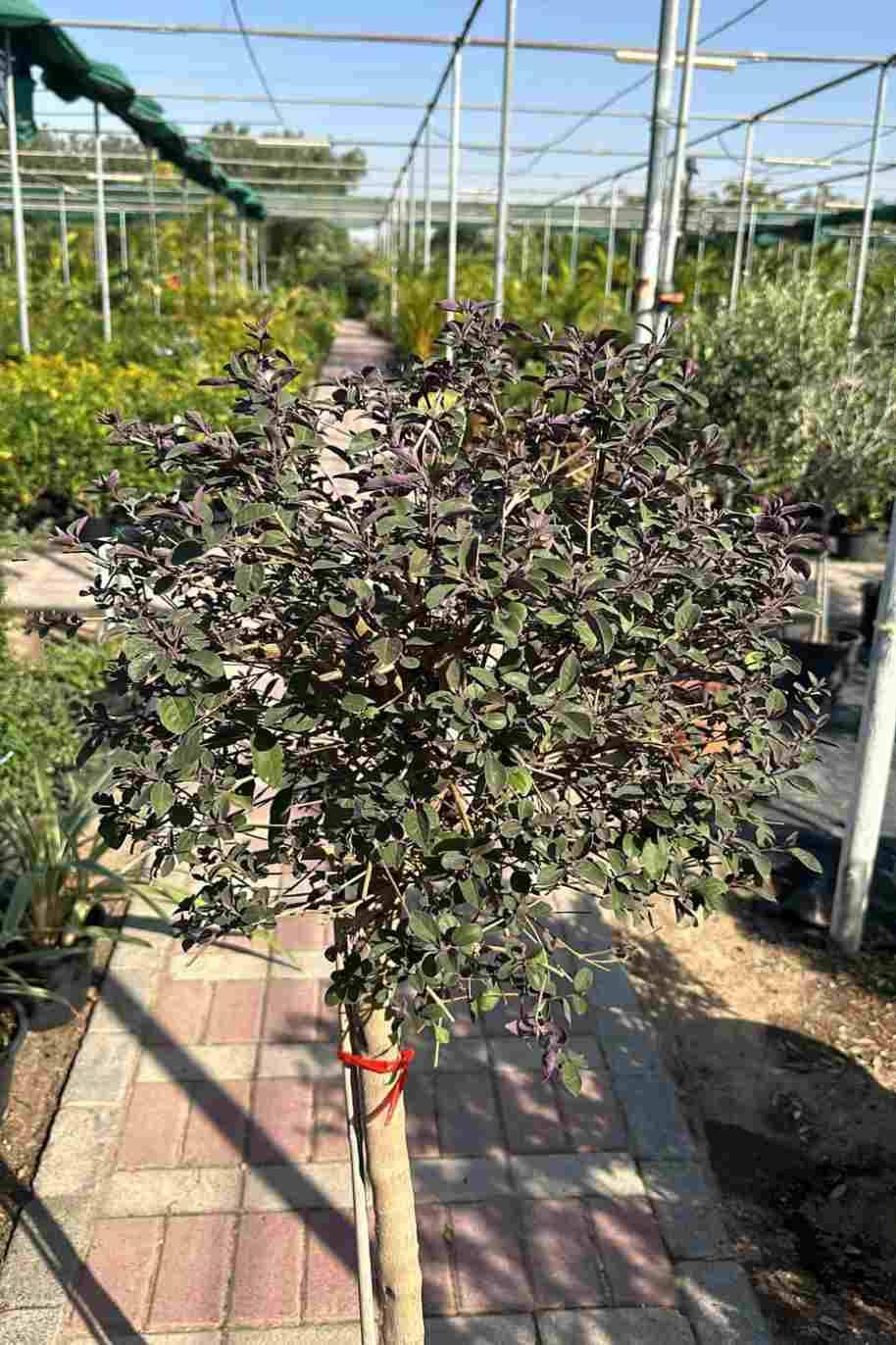Plant Bio
Vitex trifolia 'Purpurea,' commonly known as Purple Chaste Tree or Purple Vitex, is a deciduous shrub or small tree that belongs to the Lamiaceae family. This cultivar is prized for its attractive, aromatic foliage and vibrant purple flowers. Here's a description of Vitex trifolia 'Purpurea':
Leaves: The leaves are palmately compound, consisting of five to seven lance-shaped leaflets. What distinguishes this cultivar is its distinctive deep purple to burgundy foliage. The color intensifies in full sun.
Flowers: Purple Vitex produces dense spikes of tubular, lavender to purple flowers. These bloom in the summer and attract pollinators, including bees and butterflies.
Size: It typically grows as a multi-stemmed shrub, reaching heights of 6 to 15 feet (2 to 4.5 meters), depending on the growing conditions and pruning practices.
Bark: The bark is generally smooth and grayish-brown.
Growth Habit: Purple Vitex has an upright and open growth habit. It may be pruned to maintain a more compact form if desired.
Care Guide for Vitex Trifolia 'Purpurea':
Sunlight:
Plant Purple Vitex in full sun for the best foliage color and abundant flowering. It can tolerate partial shade but may not exhibit the same intense purple coloration in lower light conditions.
Temperature:
Purple Vitex is well-suited for warm climates. It is hardy in USDA zones 7-9. It may experience dieback in colder climates but tends to recover in the spring.
Soil:
Provide well-draining soil with a slightly acidic to neutral pH. This plant is adaptable to various soil types, including sandy or loamy soils.
Watering:
Purple Vitex is drought-tolerant once established. Water deeply during dry periods, especially in the first growing season. Once established, it can withstand periods of moderate drought.
Fertilization:
Fertilize in the spring with a balanced, slow-release fertilizer. Avoid excessive fertilization, as this can lead to excessive foliage growth at the expense of flowering.
Pruning:
Pruning can be done in late winter or early spring to shape the plant, remove dead wood, and encourage a more compact form. Flowering occurs on new wood, so pruning generally does not interfere with blooming.
Mulching:
Apply a layer of organic mulch around the base of the plant to conserve moisture, suppress weeds, and regulate soil temperature.
Pest and Disease Resistance:
Purple Vitex is generally resistant to pests and diseases. Good air circulation and proper spacing can help prevent issues.
Propagation:
Propagate through softwood cuttings in the spring or by collecting seeds. Softwood cuttings root easily when placed in a well-draining rooting medium.
Deer Resistance:
Purple Vitex is considered deer-resistant, making it a good choice for landscapes where deer may be present.
Container Growing:
While Purple Vitex is typically grown in the ground, it can be grown in large containers. Ensure the container has good drainage.
Landscaping Use:
Purple Vitex works well as a specimen plant, in mixed borders, or as part of a butterfly or pollinator garden.
Vitex trifolia 'Purpurea' is a versatile and visually appealing plant that can add color and interest to your garden. Adjust care practices based on your local climate and specific growing conditions.










